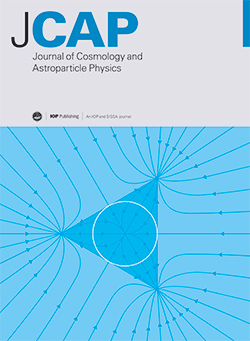QCD-sourced tachyonic phase transition in a supercooled Universe
IF 5.3
2区 物理与天体物理
Q1 ASTRONOMY & ASTROPHYSICS
Journal of Cosmology and Astroparticle Physics
Pub Date : 2025-02-27
DOI:10.1088/1475-7516/2025/02/075
引用次数: 0
Abstract
We propose a novel gravitational wave production mechanism in the context of quasi-conformal Standard Model extensions, which provide a way to dynamically generate the electroweak scale. In these models, the cosmic thermal history is modified by a substantial period of thermal inflation, potentially supercooling the Universe below the QCD scale. The exit from supercooling is typically realized through a strong, first-order phase transition. By employing the classically conformal U(1)B-L model as a representative example, we show that a large parameter space exists where bubble percolation is inefficient. In this case, the top quark condensate triggers a tachyonic phase transition driven by classical rolling of the new scalar field towards the true vacuum. As the field crosses a region where its effective mass is negative, long-wavelength scalar field fluctuations are exponentially amplified, preheating the supercooled Universe. We study the dynamics of this scenario and estimate the peak of the associated gravitational wave signal, which is detectable by future observatories in almost the entire available parameter space.求助全文
约1分钟内获得全文
求助全文
来源期刊

Journal of Cosmology and Astroparticle Physics
地学天文-天文与天体物理
CiteScore
10.20
自引率
23.40%
发文量
632
审稿时长
1 months
期刊介绍:
Journal of Cosmology and Astroparticle Physics (JCAP) encompasses theoretical, observational and experimental areas as well as computation and simulation. The journal covers the latest developments in the theory of all fundamental interactions and their cosmological implications (e.g. M-theory and cosmology, brane cosmology). JCAP''s coverage also includes topics such as formation, dynamics and clustering of galaxies, pre-galactic star formation, x-ray astronomy, radio astronomy, gravitational lensing, active galactic nuclei, intergalactic and interstellar matter.
 求助内容:
求助内容: 应助结果提醒方式:
应助结果提醒方式:


